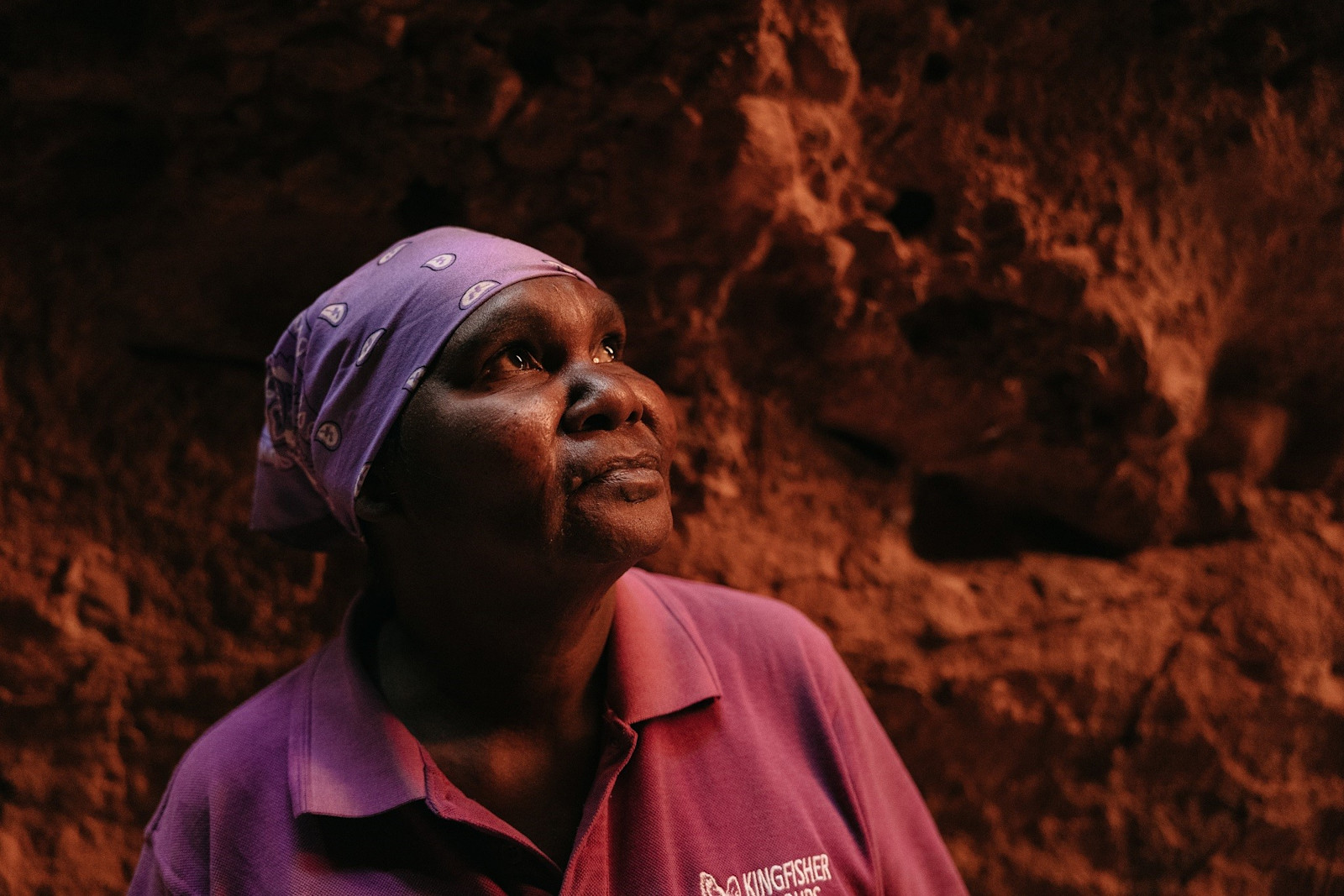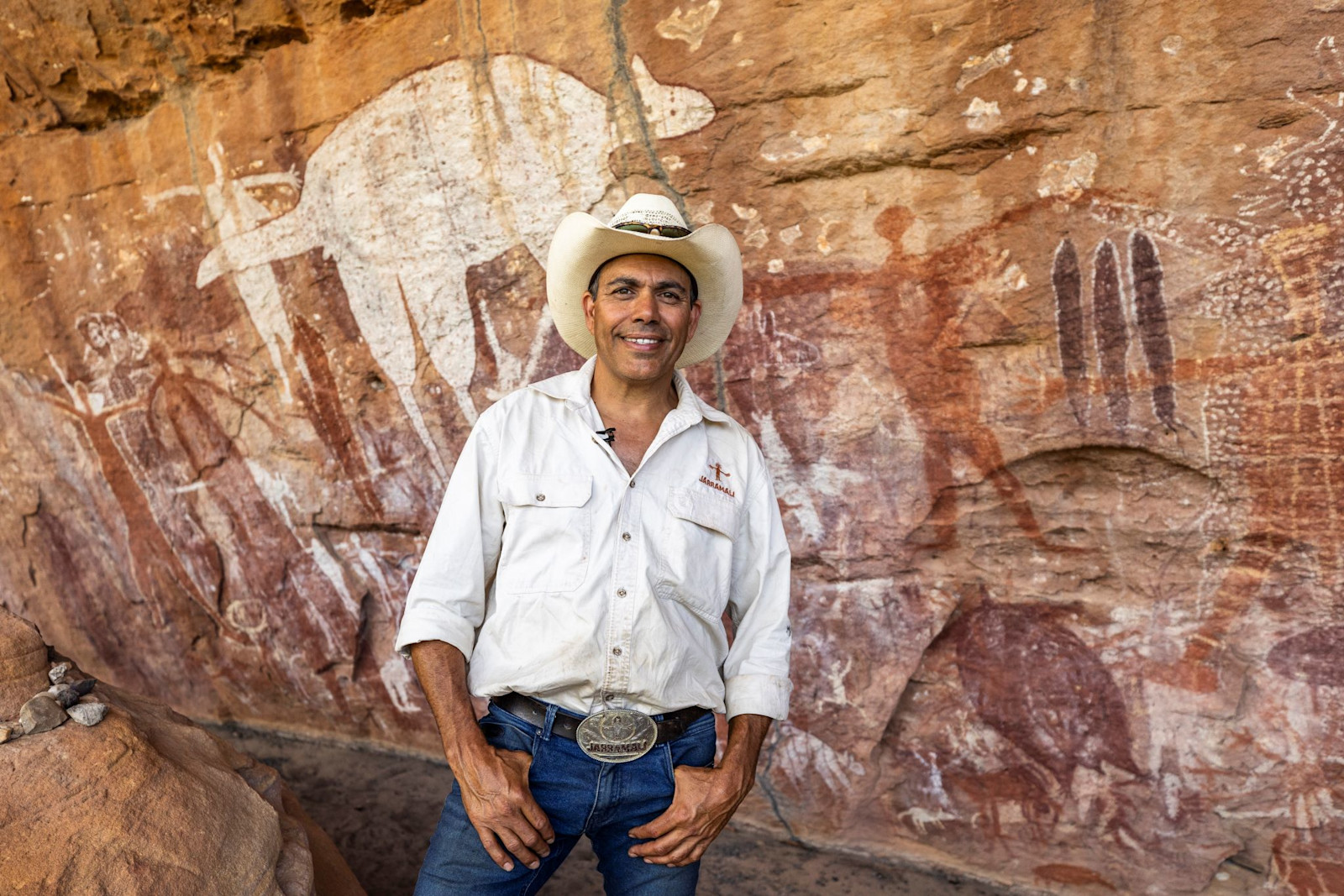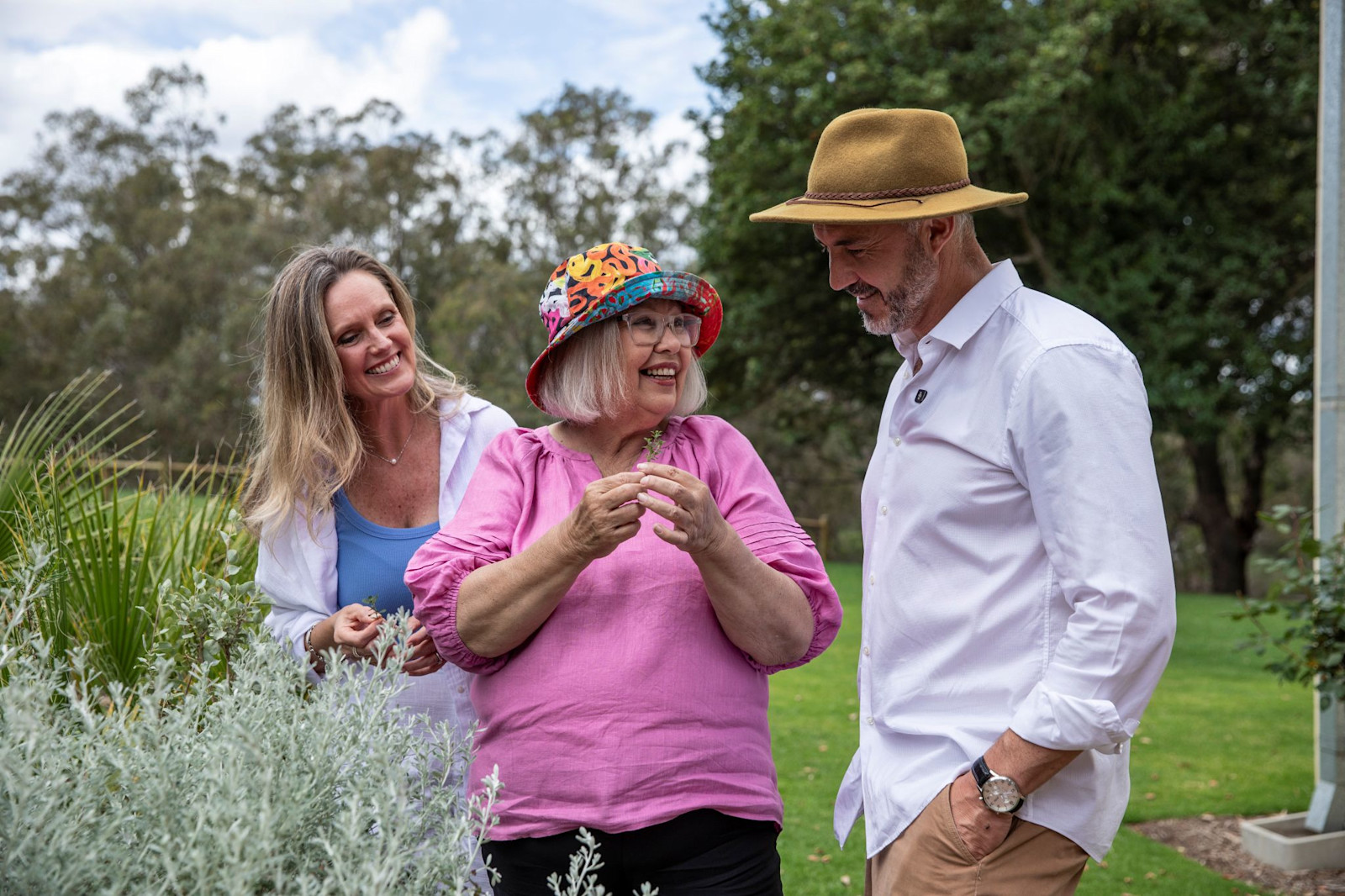Cultural connection on an Aboriginal Kakadu cruise
On the Northern Territory’s East Alligator River, a Guluyambi Cultural Cruise offers a different perspective on an ancient landscape.
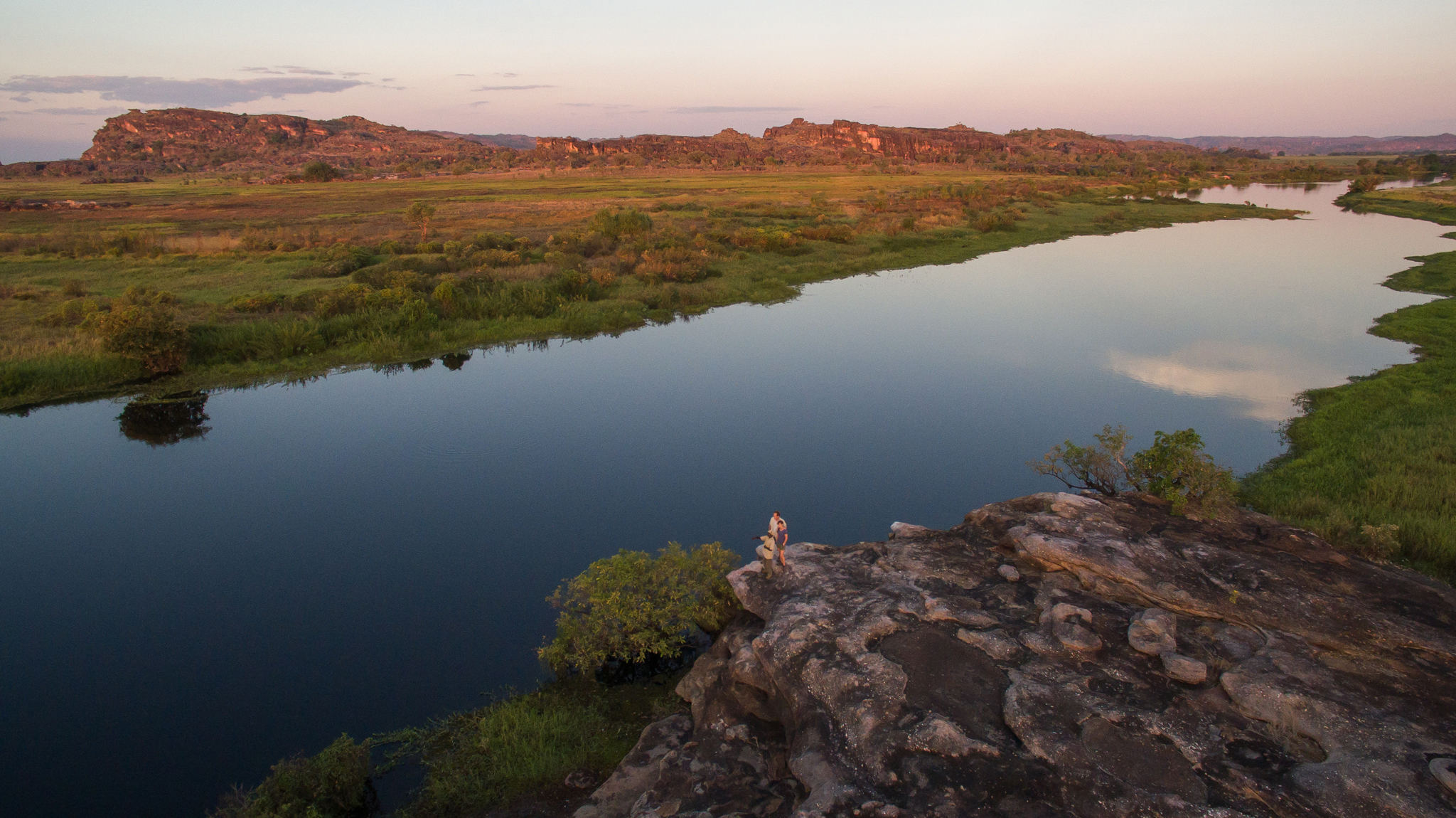
Kakadu Cultural Tours, Kakadu National Park, NT © Tourism Australia
“What’s that you see ahead of us?” asks our guide Hilton Garnarradj, gesturing towards the riverbank as our tender cuts through the water. The answer seems obvious: a copse of paperbarks, untidy-looking trees that get their name from the ribbons of pale bark that unfurl from their trunks. To Hilton and his fellow Aboriginal peoples of the Kakadu region east of Darwin/Gulumerrdgen, however, this is more than just another stand of trees.
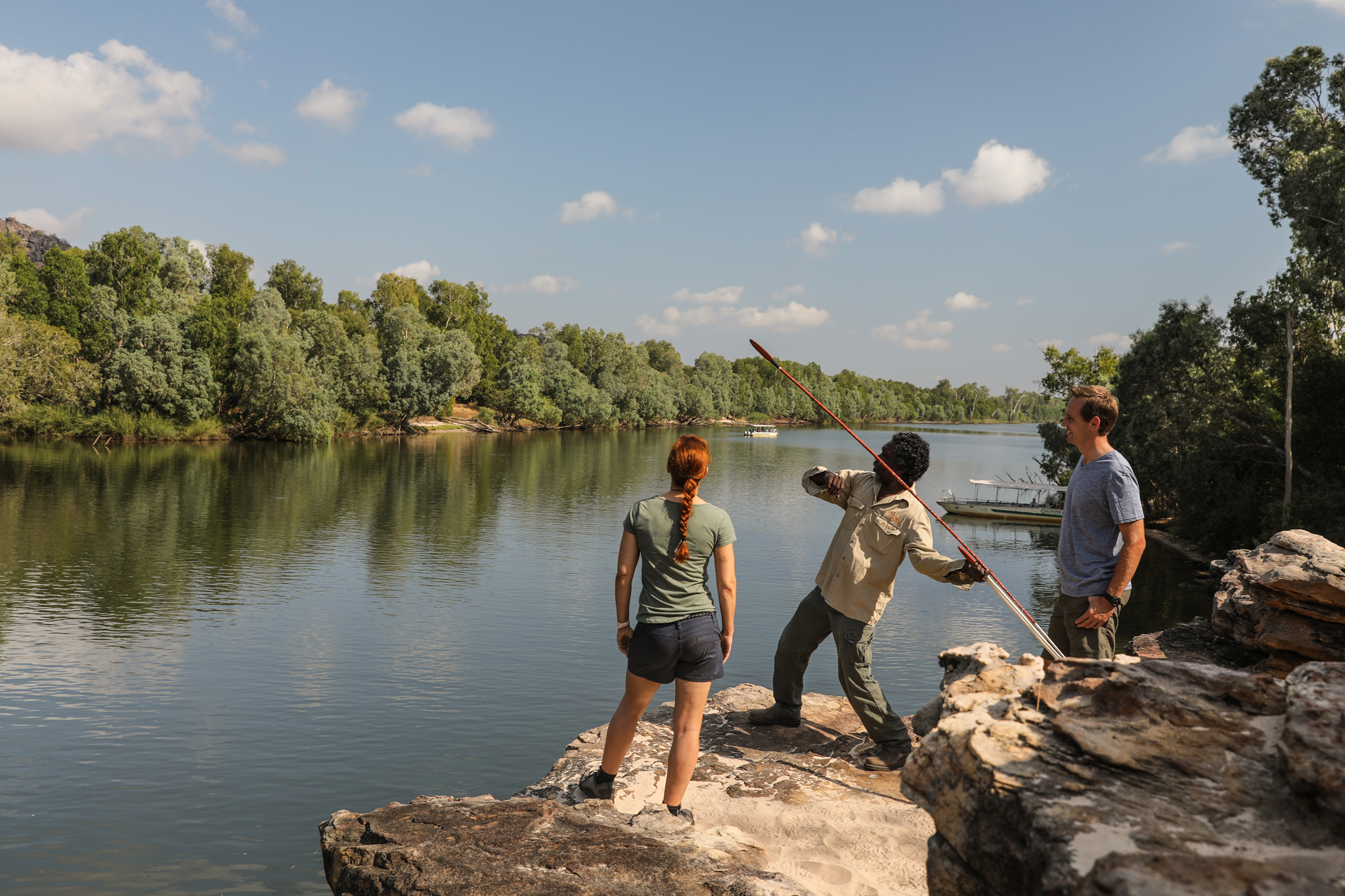
Kakadu Cultural Tours, Kakadu National Park, NT © Tourism Australia
Nature’s supermarket
A paperbark tree is the equivalent of a supermarket: a one-stop shop where you can pick up all sorts of daily necessities. As Hilton peels off long strips of bark, he demonstrates the many uses his people find for the tree. That soft bark can be used to swaddle a baby, provide soft bedding, or wrap up fish to cook in a ground oven, adding paperbark leaves for a kick of flavour. “This Country, it looks after us,” he says happily.
It doesn’t stop there: the waterproof bark can also be twisted to form a drinking vessel, or layered in large sheets over branches to create a simple raft, or guluyambi – from where our cruise, the Guluyambi Cultural Cruise, gets its name. It’s one of several experiences on offer from Kakadu Cultural Tours.
There is much more to learn as we cruise along the East Alligator River, bathed in late-afternoon sunlight. As we trace each bend, we are greeted by a series of different landscapes, from monsoonal rainforest to towering sandstone escarpments.
Traditionally, these diverse environments offer the local Aboriginal peoples a rich range of bush tucker, from barramundi fish to magpie geese eggs to water lilies. “The stems, they are delicious; taste like celery,” Hilton says. He also points out the area’s rich bird life, from sea eagles soaring above to egrets and cormorants frolicking in the water, and tiny flashes of blue that disappear almost before we see them, which, he tells us, are azure kingfishers.
And then there are ginga, or saltwater crocodiles – plenty of them. Lazing on the banks, or semi-submerged in the water, these fearsome salties are as relaxed as only apex predators can be. Safe in our boat, we thrill at the close encounters.
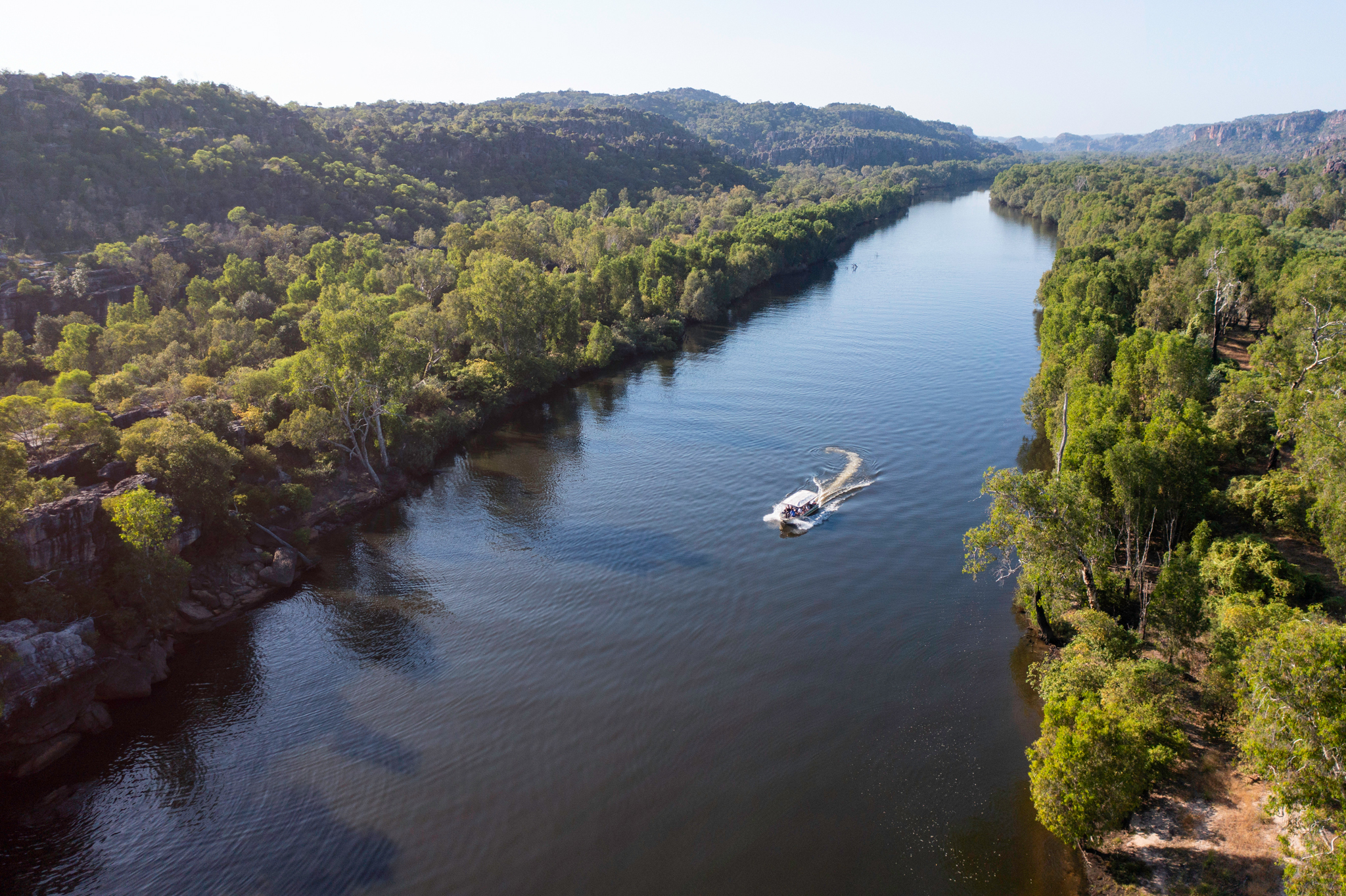
Kakadu Cultural Tours, Kakadu National Park, NT © Tourism Australia
Armed with knowledge
As we drift along, Hilton happily answers questions about everything from Creation stories – which trace the adventures of Ngalyod, the Rainbow Serpent, and Namarrgon, the Lightning Wielder – to how the area’s Aboriginal inhabitants live today. He even gives us a crash course in spear technique, letting us handle a range of spears to appreciate the way each one is formed for a specific purpose.
“You want to hunt a buffalo, you need a heavy spear,” he says, before handing over a much lighter option. “This one we use for fishing.”
“Why is it so light?” someone asks. Hilton flashes his radiant smile again. “So it floats, of course!”
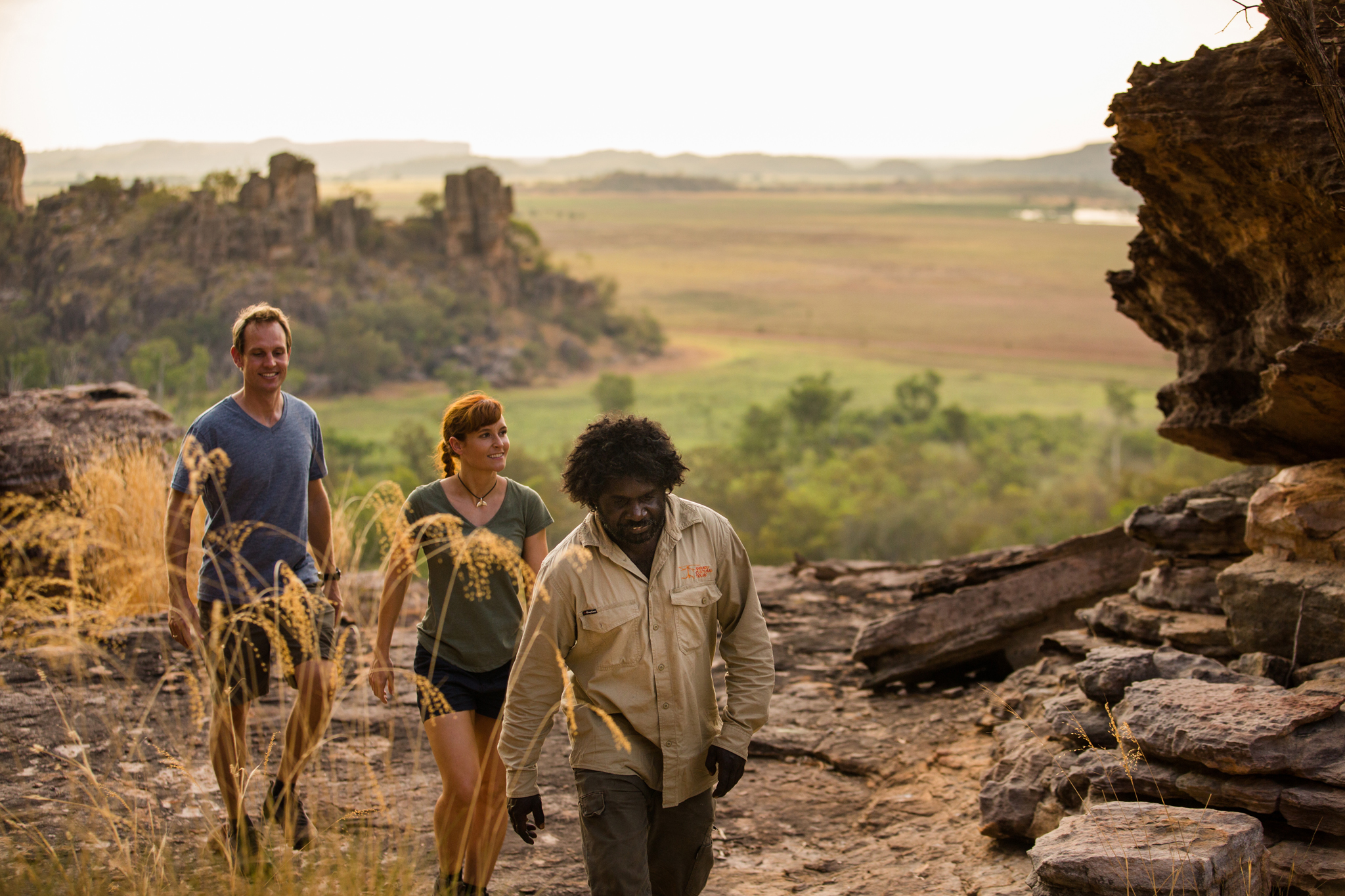
Kakadu Cultural Tours, Kakadu National Park, NT © Tourism Australia
Art for the ages
By the time we pull up to the dock and say our goodbyes to Hilton, it’s late afternoon. We take the five-minute drive to the nearby Ubirr – home to some of the most exceptional rock art in the world, including depictions of first encounters with Europeans – for yet another memorable experience, exploring these ancient paintings and the interpretive signage accompanying them. Finally, we conclude the day with the short ascent up Ubirr rock – a famous lookout, offering spectacular 360-degree views of the surrounding floodplains and rock escarpments. Ending our time here, with a spectacular sunset for company, is a rite of passage for all Kakadu visitors – and all the more poignant for our deeper understanding of the peoples who have lived here for so many thousands of years.
